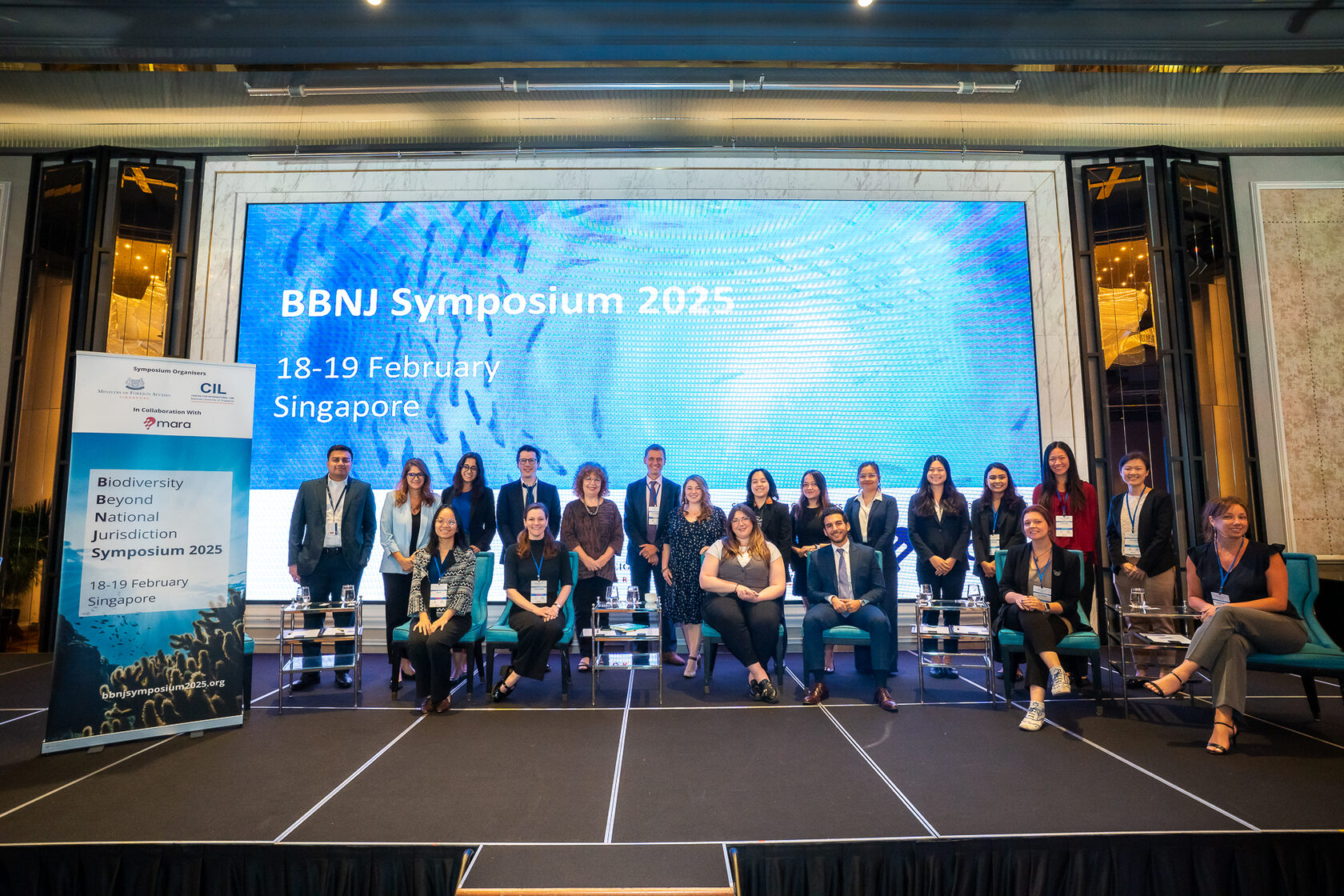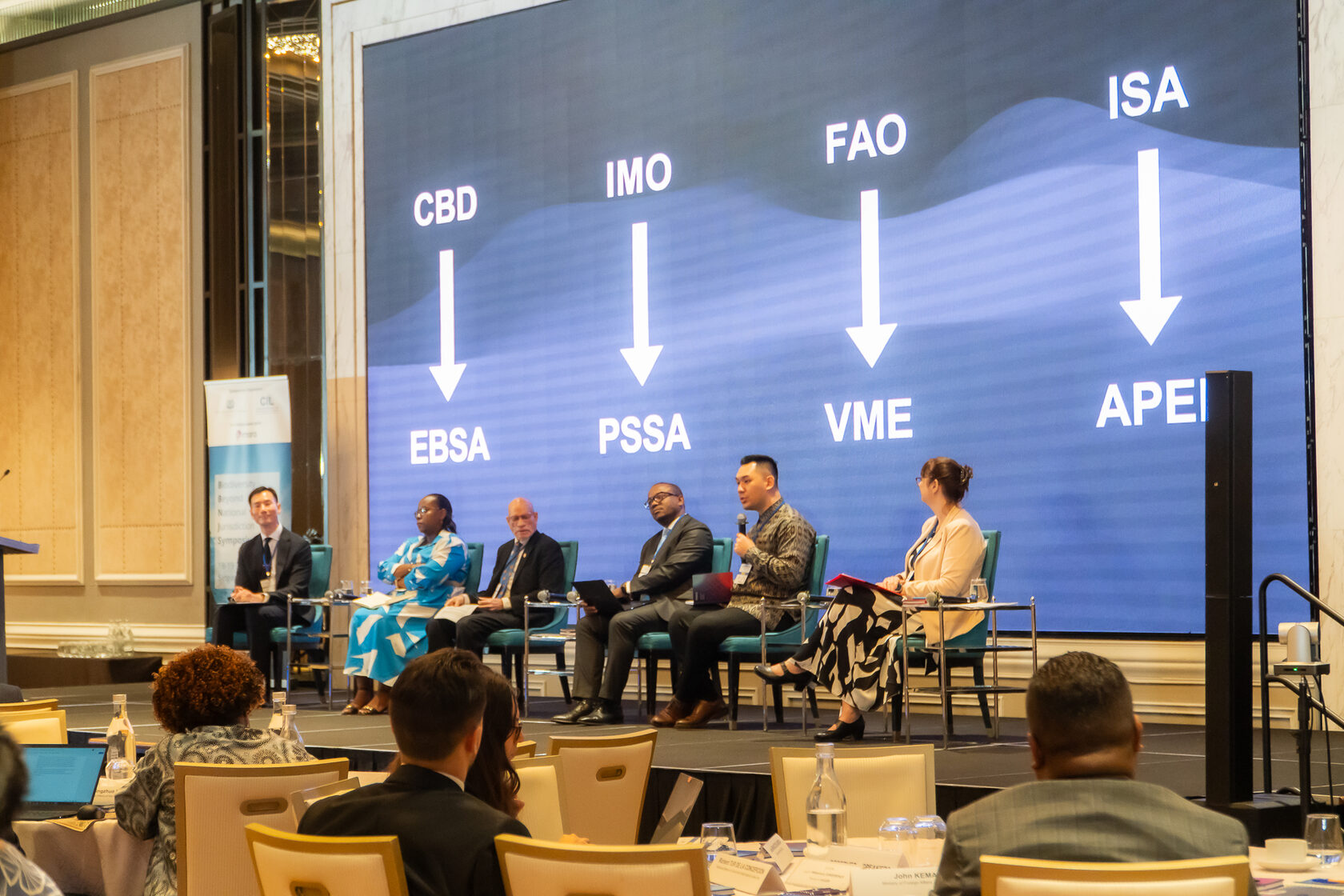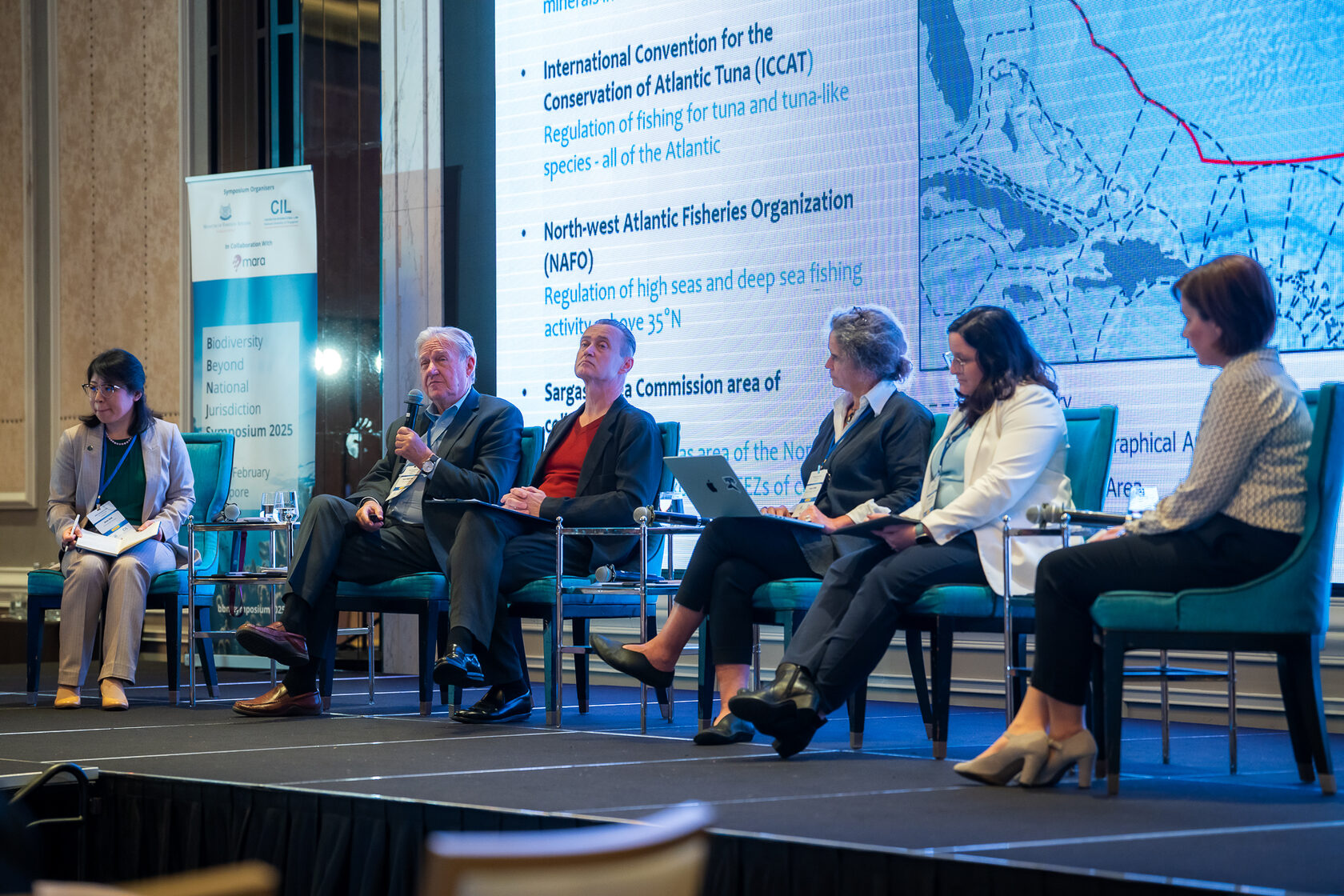Exploring the Future of Ocean Governance: Insights from the Second BBNJ Symposium
The second BBNJ Symposium and satellite events, held from 18-20 February 2025 in Singapore and online, brought together over 450 experts, policymakers, and stakeholders from across the globe to discuss the United Nations Agreement on the conservation and sustainable use of biodiversity beyond national jurisdiction (BBNJ Agreement).

Organised by the Singaporean Ministry of Foreign Affairs, the Centre for International Law (CIL) of the National University of Singapore, and Mara Consultants, the event focused on advancing treaty ratification and addressing both the opportunities and challenges of implementation.
With attendees from over 70 countries, primarily from Asia (32%), Europe (30%), and North America (22%), the symposium facilitated interdisciplinary discussions across six panels and seven satellite events, drawing participation from academia (50%), government (30%), NGOs (10%), and industry and other groups (10%).
Opening Remarks: A Message of Unity
The symposium began on a hopeful note with a Welcome Address by Ambassador-At-Large Tommy Koh and a Keynote Speech by Singapore’s Minister for Foreign Affairs, Dr. Vivian Balakris

Both speakers underscored the importance of international cooperation and legal frameworks like the United Nations Convention on the Law of the Sea (UNCLOS) in protecting marine biodiversity and ensuring the fair and equitable use of marine resources. They also highlighted the extraordinary achievement of adoption by consensus of the BBNJ Agreement under UNCLOS in June 2023. In the words of Mr. Koh, “UNCLOS is an instrument for peace and peace is especially important in this time of war.”
Key Takeaways:
(1) Ensure the BBNJ Agreement Enhances, Not Undermines, Existing Systems
A key theme throughout the symposium was ensuring the BBNJ Agreement enhances, rather than replaces, existing governance systems. The Agreement must align with current research processes, such as integrating the unique batch identifier for marine genetic resources into established research data collection planning and reporting requirements.

Funding mechanisms under the Agreement should also look to support and reinforce high seas conservation efforts without duplicating existing marine protected area (MPA) efforts or emerging monitoring systems.
Additionally, synchronising consultation timelines with bodies like Regional Fisheries Management Organisations (RFMOs) where possible could ensure smoother decision-making and increased feedback on MPA proposals and environmental impact assessment (EIA) processes.
(2) Opportunities for Innovation in Ocean Governance
Rather than seeing implementation as a challenge, some panellists highlighted it as an opportunity to innovate and enhance governance mechanisms. One area of discussion was the establishment of strong precedents for proposing and designating area-based management tools (ABMTs), including MPAs, to strengthen conservation strategies. For example, the Research Roundtable included discussion of the work of Sargasso Sea Commission’s work building a Socio-ecosystem Diagnostic Analysis to inform a Strategic Action Plan for ecosystem management.
Additionally, panellists emphasised the importance of instilling rigorous procedures for conducting EIAs to assess the potential effects of activities in the high seas, particularly as climate change continues to exert increasing pressure on marine ecosystems.

Leveraging these opportunities under the BBNJ Agreement has the potential to drive meaningful progress in global ocean governance.
(3) Promoting Capacity-Building and Accessibility
The capacity-building and transfer of marine technology (CBTMT) provisions were highlighted by panellists and attendees as a way to foster co-production of knowledge and promote a more inclusive and equitable approach to conservation.
A recurring concern was ensuring accessibility to the Agreement’s complex legal and scientific language. The sheer number of acronyms and technical terms in the treaty can be overwhelming, even for expert audiences who have engaged with the Agreement since its inception, but making the treaty accessible and comprehensible is key to widespread adoption and participation.

Some panellists stressed the need for clear guidance and resources to help all stakeholders engage meaningfully. That is to say that a country—no matter its status as a coastal nation or a landlocked country, or a developing or developed state—has the right and the responsibility to participate in all aspects of the Agreement to ensure fair participation in access and benefit-sharing, area-based management proposals, environmental impact assessment process, and capacity-building efforts.
The Road Ahead
In her closing speech, Dr. Nilufer Oral, Director of CIL at the National University of Singapore, celebrated the decades-long journey leading to the BBNJ Agreement’s adoption and urged continued collaboration to overcome the challenges delaying universal ratification.
With the first meeting of the BBNJ Preparatory Committee scheduled for 14-25 April 2025 in New York, crucial decisions on the Conference of the Parties’ structure and procedures, funding, and how information can be shared through the essential platform of the Clearing-House Mechanism remain ahead.

Professor Murray Roberts, founding Director of Mara Consultants and chair of the first BBNJ Symposium in Edinburgh in October 2023 said:
“Thanks to the wonderful organisation of the Ministry of Foreign Affairs and Centre for International Law the BBNJ Symposium Series has proven its value as an independent forum to discuss how this Treaty will move from negotiation to ratification and onwards to implementation. We hope to see a third symposium in South America followed by a fourth focusing on priorities of Small Island Developing States - the BBNJ Symposium continues to gather momentum!”.Prof Murray Roberts
In Singapore, the second BBNJ Symposium showcased a global commitment to protecting marine biodiversity beyond national jurisdiction and reinforced the importance of cooperation, knowledge-sharing, and capacity-building in achieving the Agreement’s goals. But the work is not done. As the race towards ratification continues with 21 countries now party to the Agreement, we must continue to overcome the barriers to global ocean protection and collaborate to create a healthy and prosperous future.
